Suvi gives old clothes new life with supermarket dyes—and even transformed a leather jacket with shoe polish!
Suvi Höyden, 37, thinks a garment’s current color and shape are just a phase. When she noticed her white shirt didn't leave in the closet, she knew what to do. She managed to turn a sweater that was too long into something lovely with just a bit of tweaking, too. Here are Suvi's tips for discovering a new favorite outfit from the back of your closet.
One of my most vivid childhood memories is coming home from school and realizing my clothes were a different color than they were in the morning, ” Suvi Höyden says. In Suvi’s childhood home, dyeing textiles was a natural way to care for worn and faded clothes. These days, Suvi repairs, dyes, or modifies her family’s clothing almost every week.
Suvi, how did you get into dyeing clothes?
It all started with baby gauze fabric. About five years ago, I realized our family’s cupboards were filled with cotton cloths used to dry babies’ bottoms, wipe up spit-ups, and replace paper towels and bibs. That heavy use had left its mark. Throwing them away felt silly because they made great basic cleaning cloths. So, I decided to dye them.
After dyeing those gauze fabrics, I got more excited about dyeing as a whole. Around the same time, I got a sewing machine from my mother-in-law as a gift and also started repairing my children’s clothes.
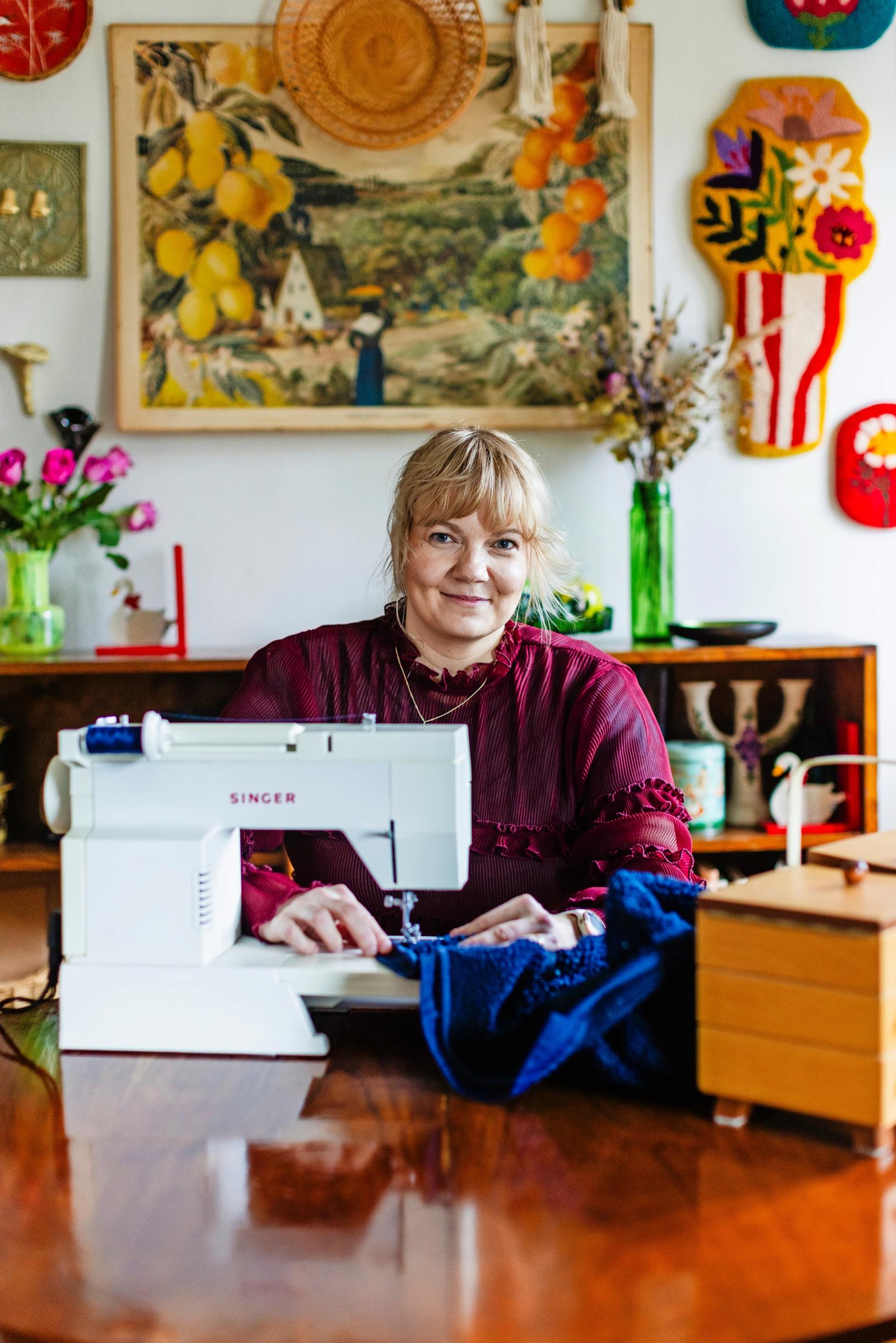
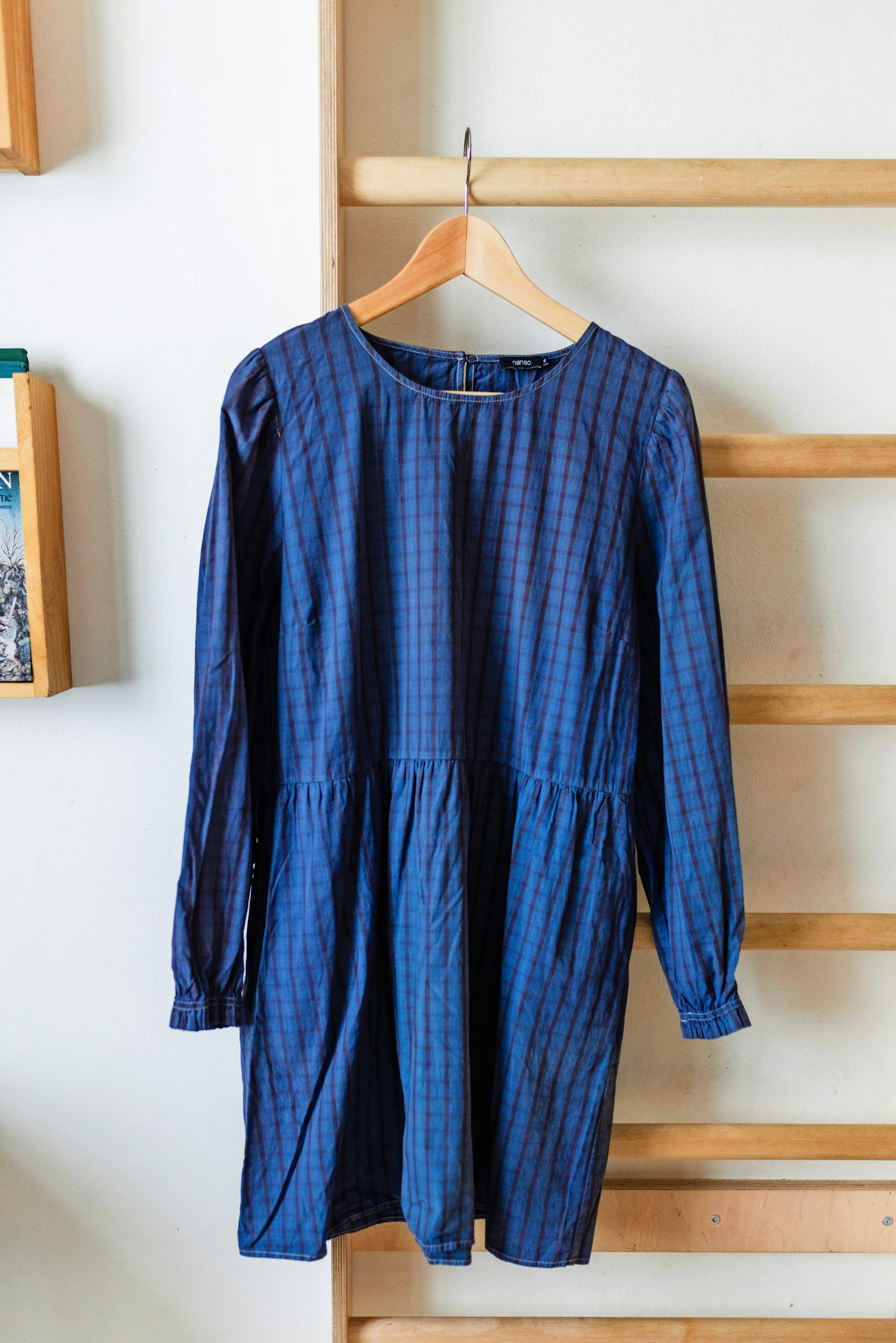
“The way I see it, a garment’s current color and style are just a phase.”
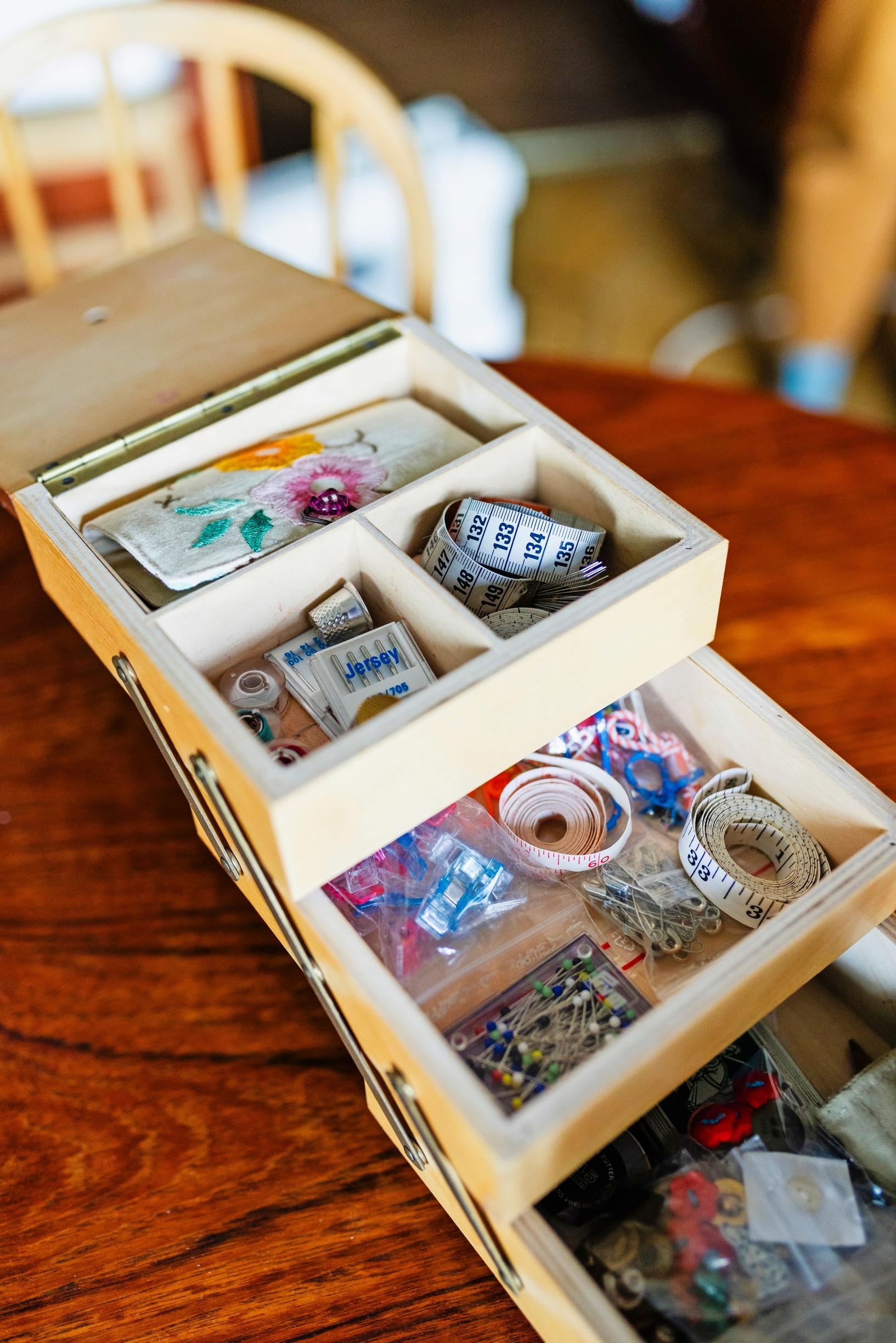
In what different ways do you alter clothes?
I see a garment’s current color and style as just a phase. Dyeing is part of my regular clothing care routine. I regularly dye worn or faded clothes with fabric dyes from the supermarket. If I don’t like a garment’s original color and it stays in my closet, I’ll dye it. I’ve even tinted a leather jacket with shoe polish.
I also repair torn clothes by darning and sewing. I make structural changes too. For instance, I converted a dress into a shirt and transformed a blazer-dress into just a blazer. Once, I shortened a quilted vest from thigh-length to waist-length and added cute ribbon ties.
“Knowing how to alter and dye clothes has influenced what I can buy at thrift stores.”
I don’t usually buy clothes specifically for altering. Mostly, I alter clothes already in my closet so I’ll enjoy wearing them more. However, being able to alter and dye items has changed what I can buy at thrift stores.
Once, I found a red wool cardigan with a gorgeous color, but it was about six inches too long at the hem. I like shorter tops, so I unraveled the entire hem, shortened it, and knitted a new rib. Now it’s one of my favorites.
I used to think I wouldn’t pay for damaged or flawed clothing. Now, holes or small defects don’t automatically turn me off. Instead, I consider whether the price is fair for the repairs needed. That lets me find even better deals at flea markets.
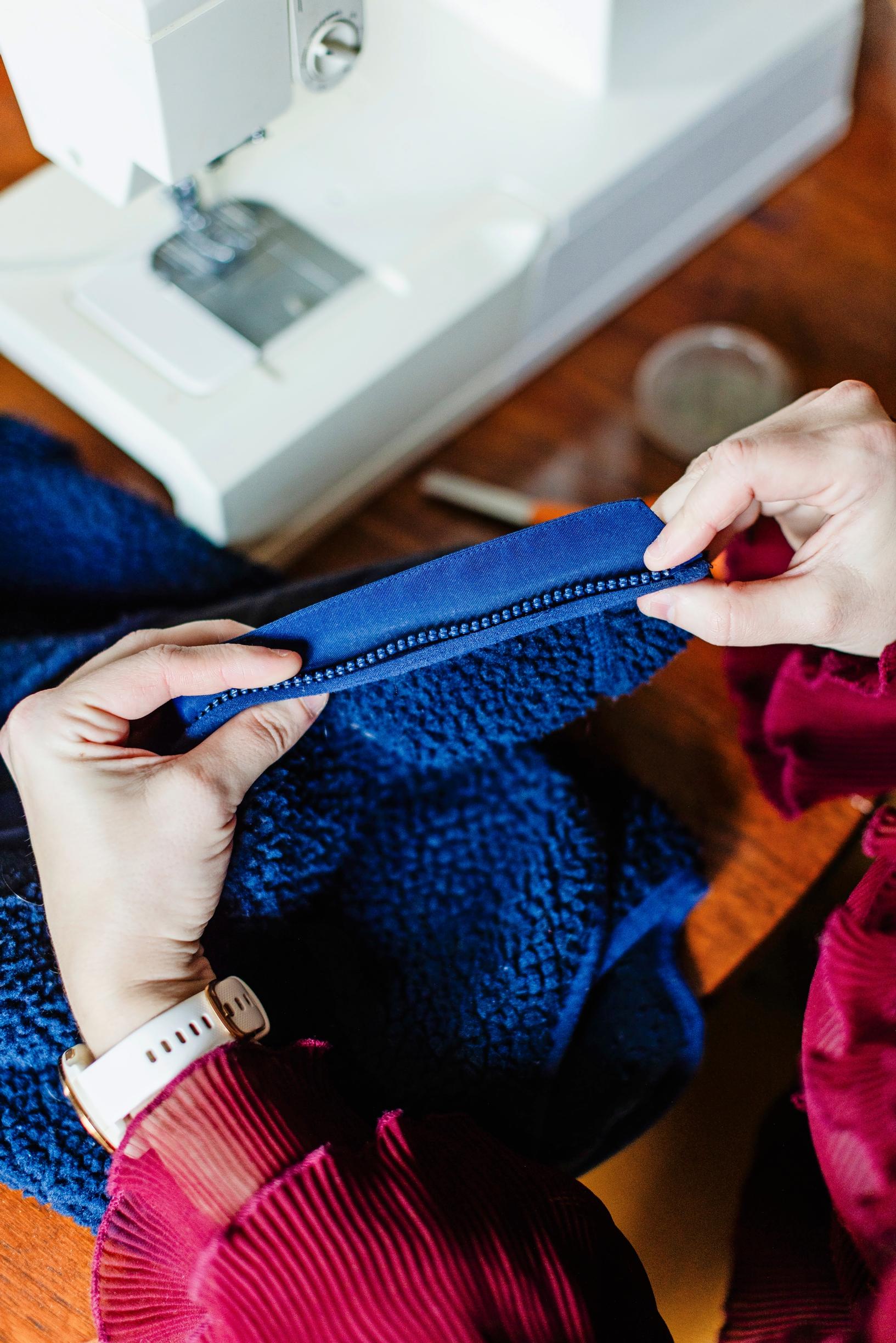
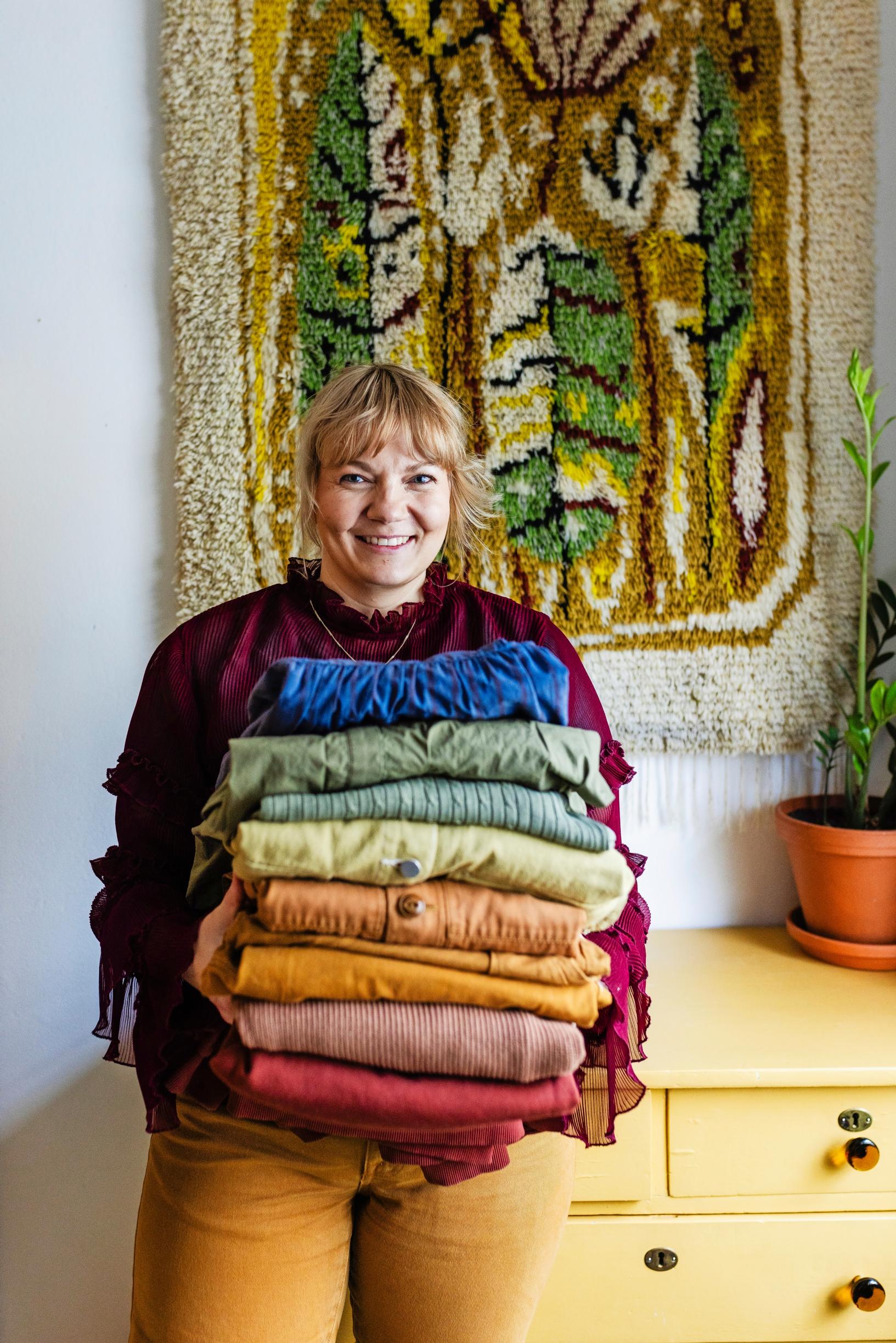
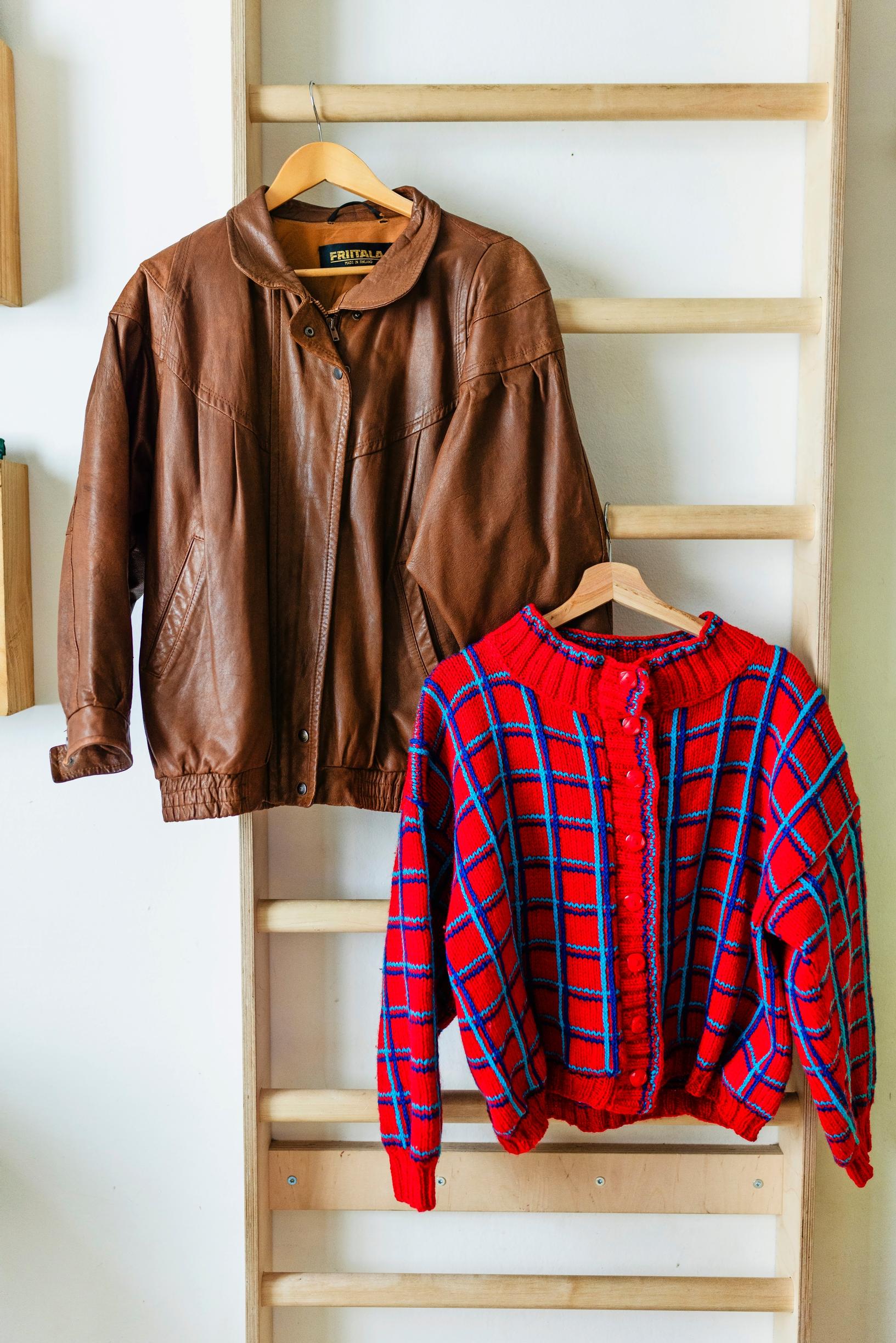
What should you keep in mind when dyeing clothes?
When I post pictures of my dyed clothes on Instagram, a lot of people ask if it ruins the washing machine. I’ve never had permanent stains, probably because I follow the instructions on the dye package and then run the machine empty right afterward.
If you dye clothes, be prepared that you can't always predict the results. The original shade and the fabric's material matter. Pure cotton takes dye best. Supermarket dyes meant for natural fibers won’t stick to synthetics. If a garment was sewn with polyester or acrylic yarn, those materials will stay the original color.
My best advice for dyeing is definitely that you don’t have to use the entire package of dye at once. You can also blend different colors, though that may not work with liquid dyes. I use dye salts, which are solid.
Dye salts are easy to measure in small amounts, for example into a laundry ball. I almost never use an entire pack on one load because I usually dye small batches, and I don’t want the colors to be too dark or intense.
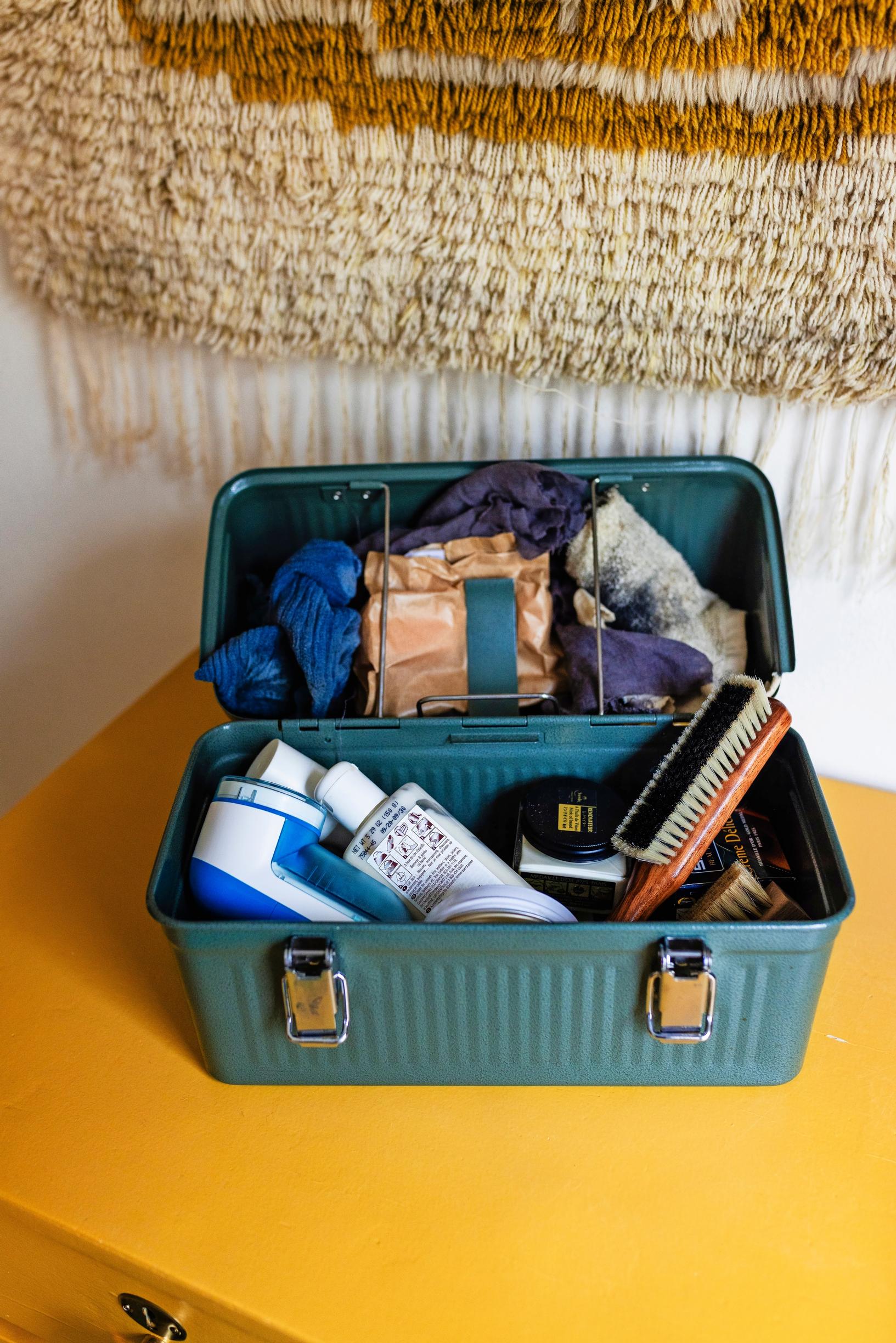
“My best tip for dyeing is definitely that you don’t have to use the entire package of dye at once.”
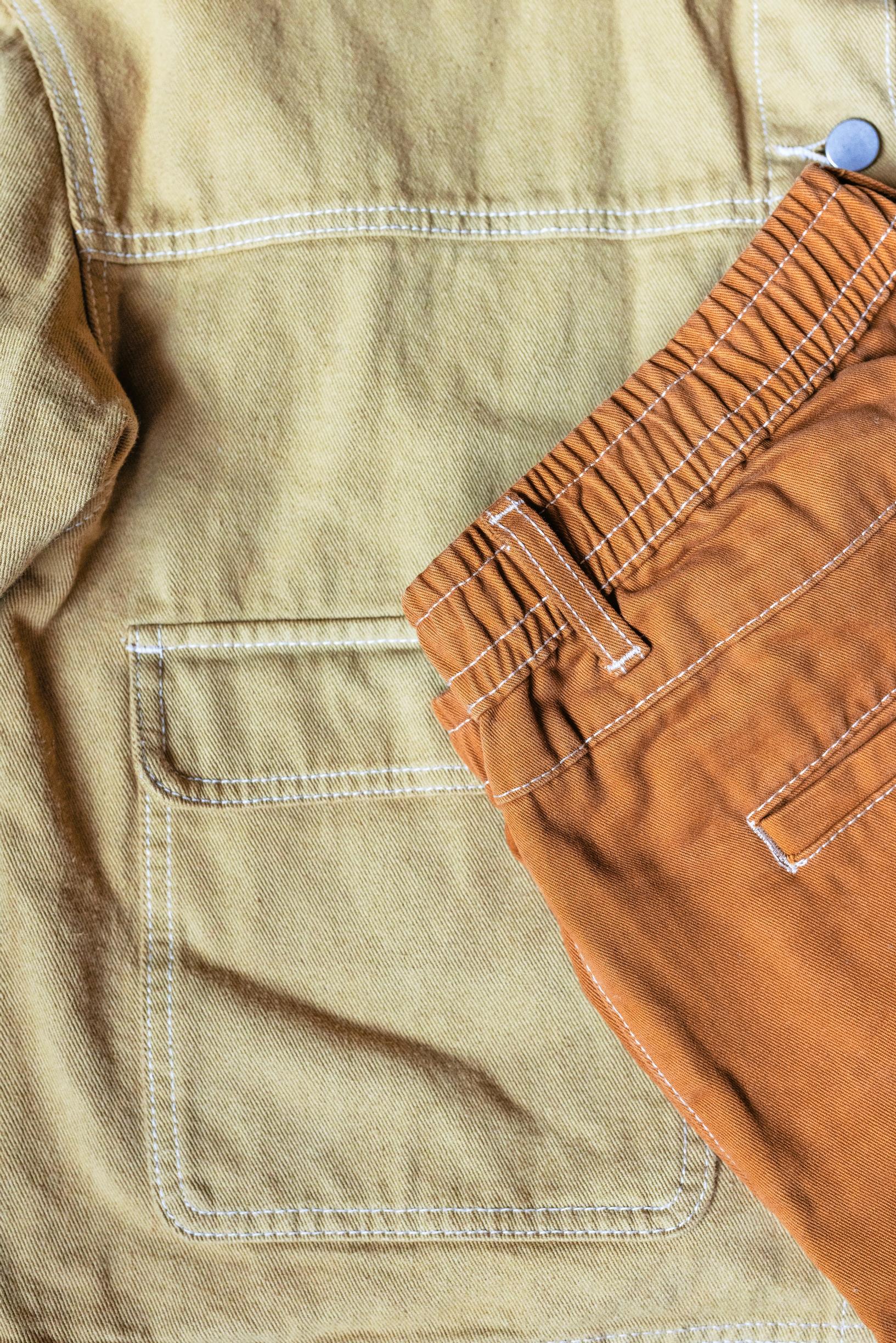
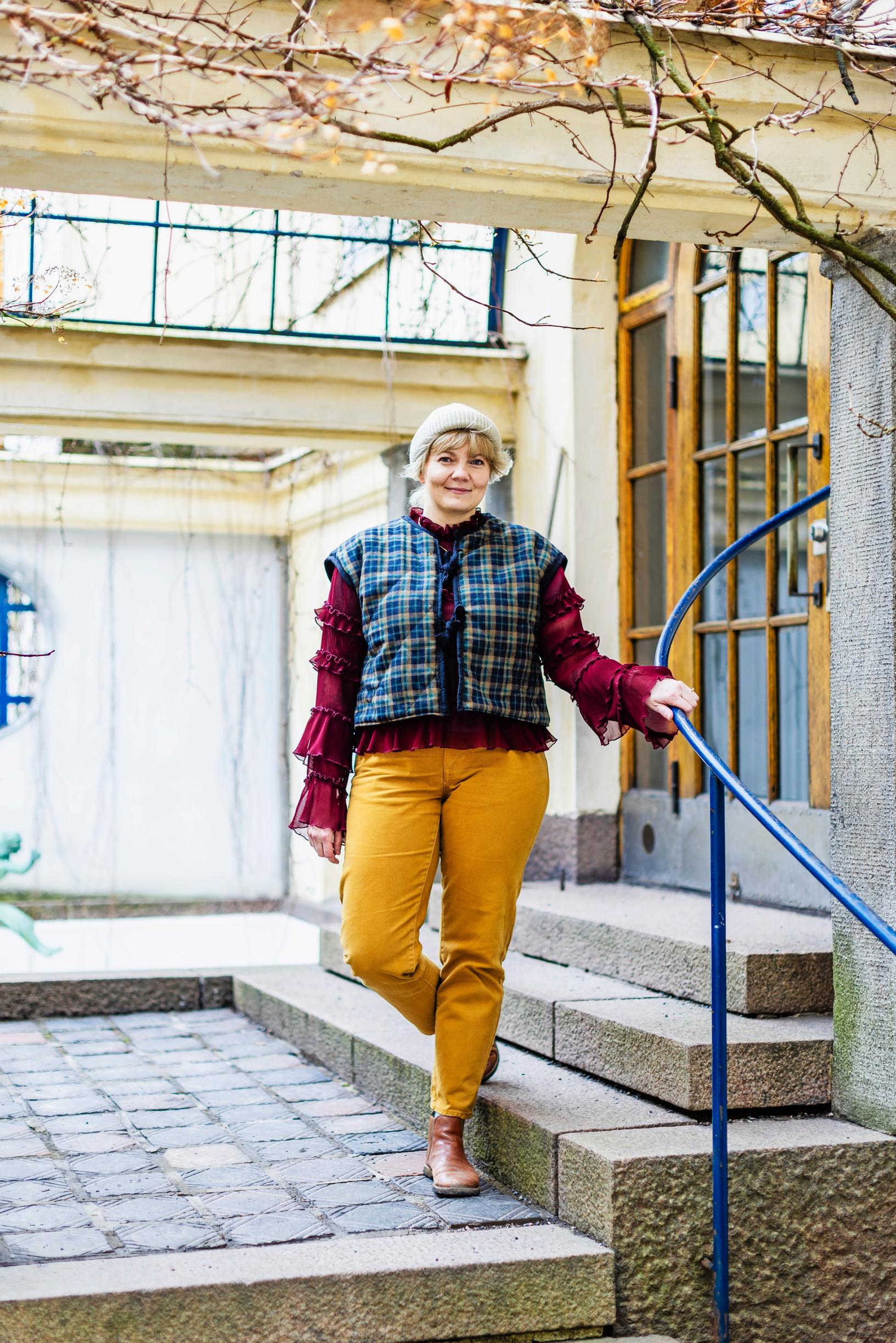
Aren’t you afraid clothes might get ruined when dyeing or altering them?
Not all of my experiments go as planned! Once, I wanted a few garments to be a warm brown, but they turned out almost black because I used too much dye. Luckily, you can remove dye with color remover and then try again. Sometimes I also use remover to whiten white laundry—it gets rid of all the stains.
My sewing might not pass a professional’s inspection, but I feel like if my sewing skills get me to the point where I'm happy with the garment, that’s enough for me.
Overall, I’m pretty optimistic. If something interests me, I think, “Why wouldn’t I be able to learn or do it?” And you really learn by doing.
Suvi’s tips for dyeing
- Cotton takes dye best and can absorb very strong colors. If you want lighter shades, just use part of the dye.
- You can dye wool and silk, too. I learned this when I dyed a white silk blouse that had been sitting in my closet. It was a nice blouse, but I don’t wear white. I figured I had nothing to lose by trying, and now I wear it all the time.
- You can tint leather with shoe polish. You can also do a full color change by using leather paint.


